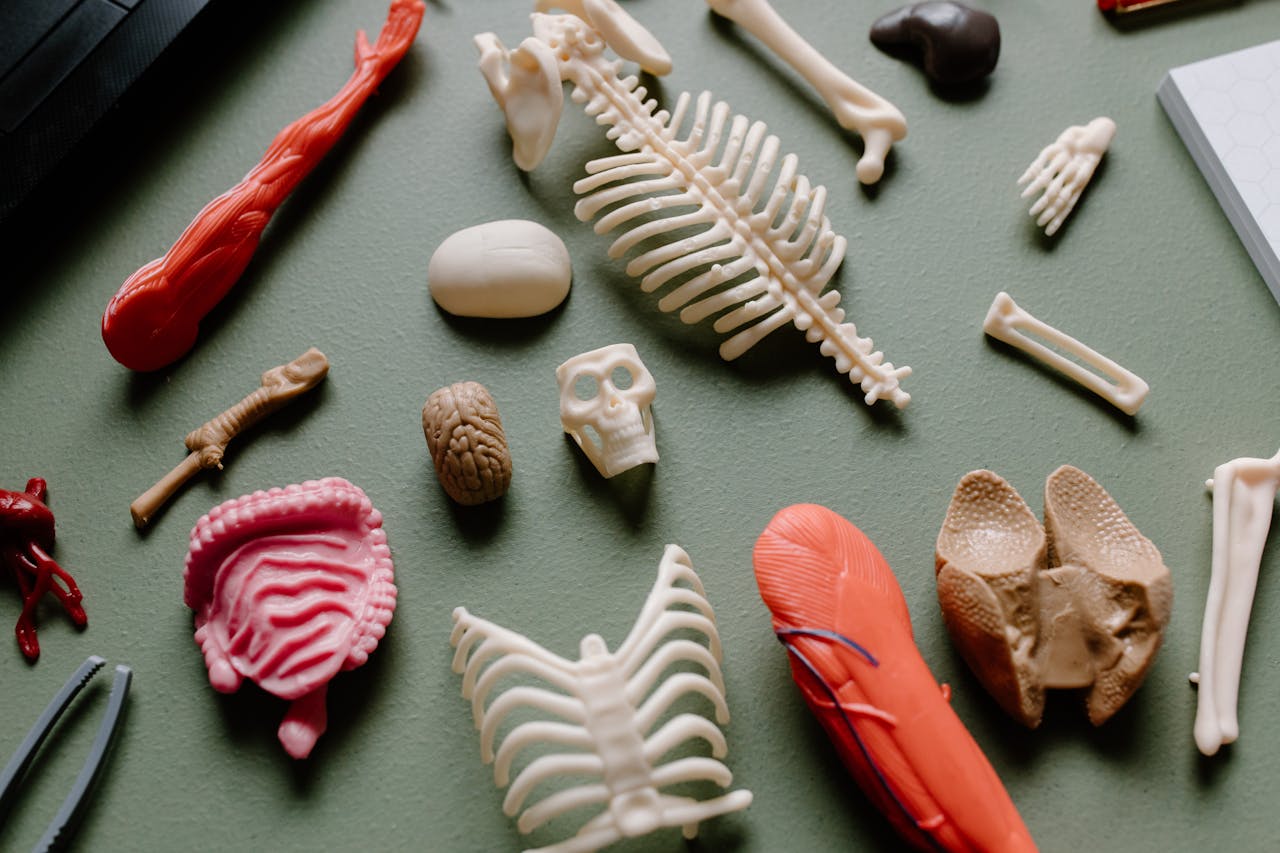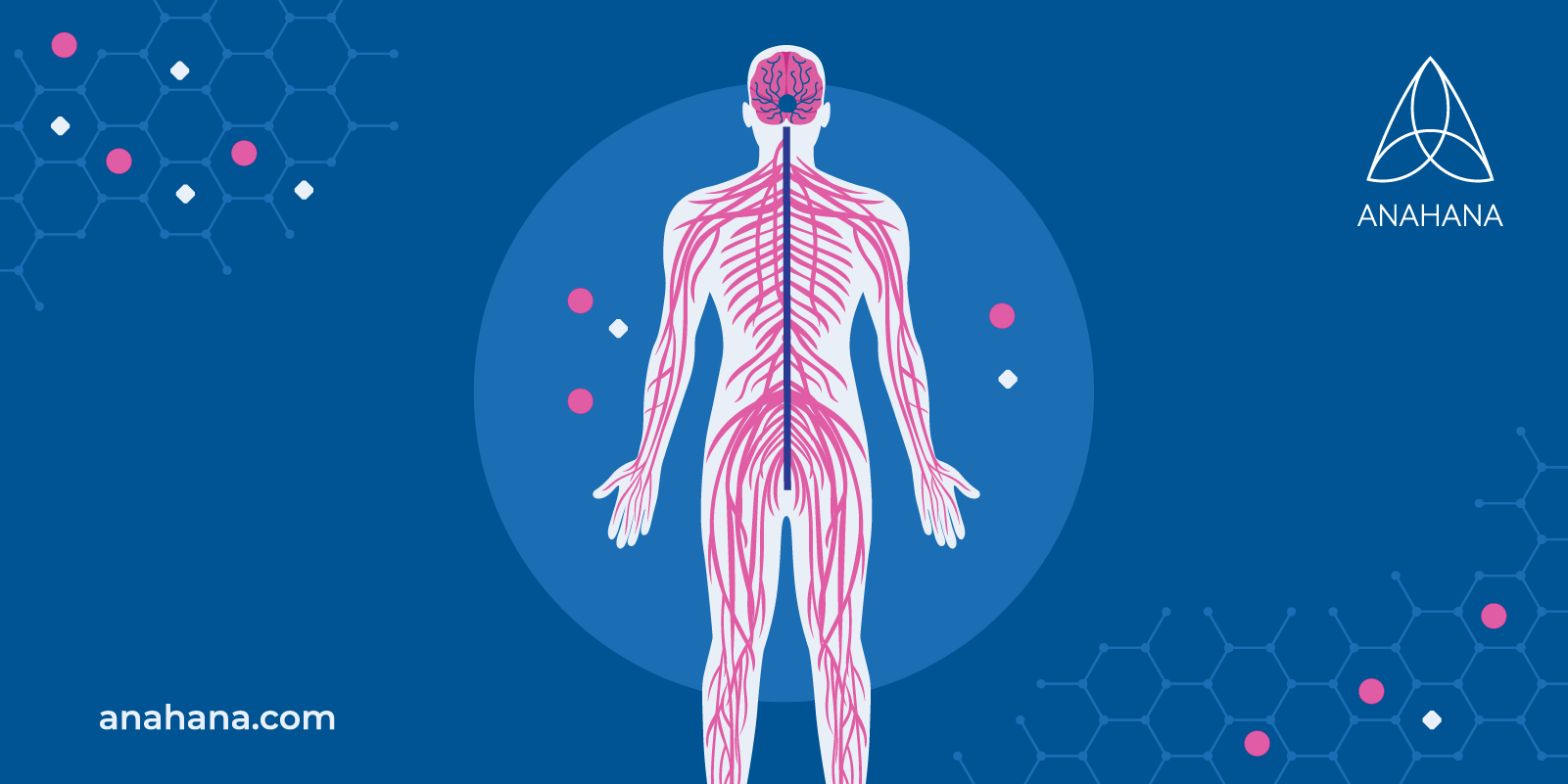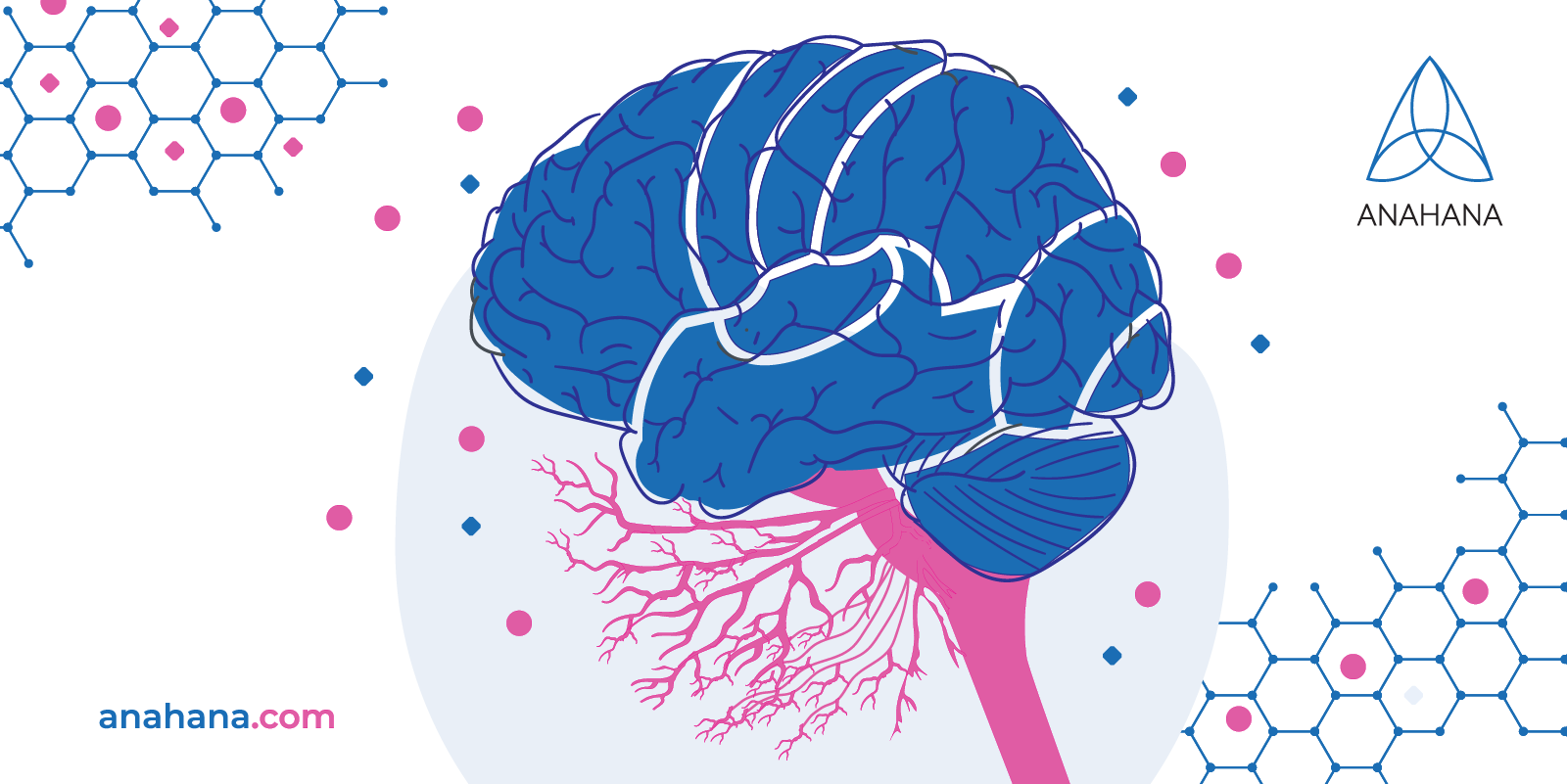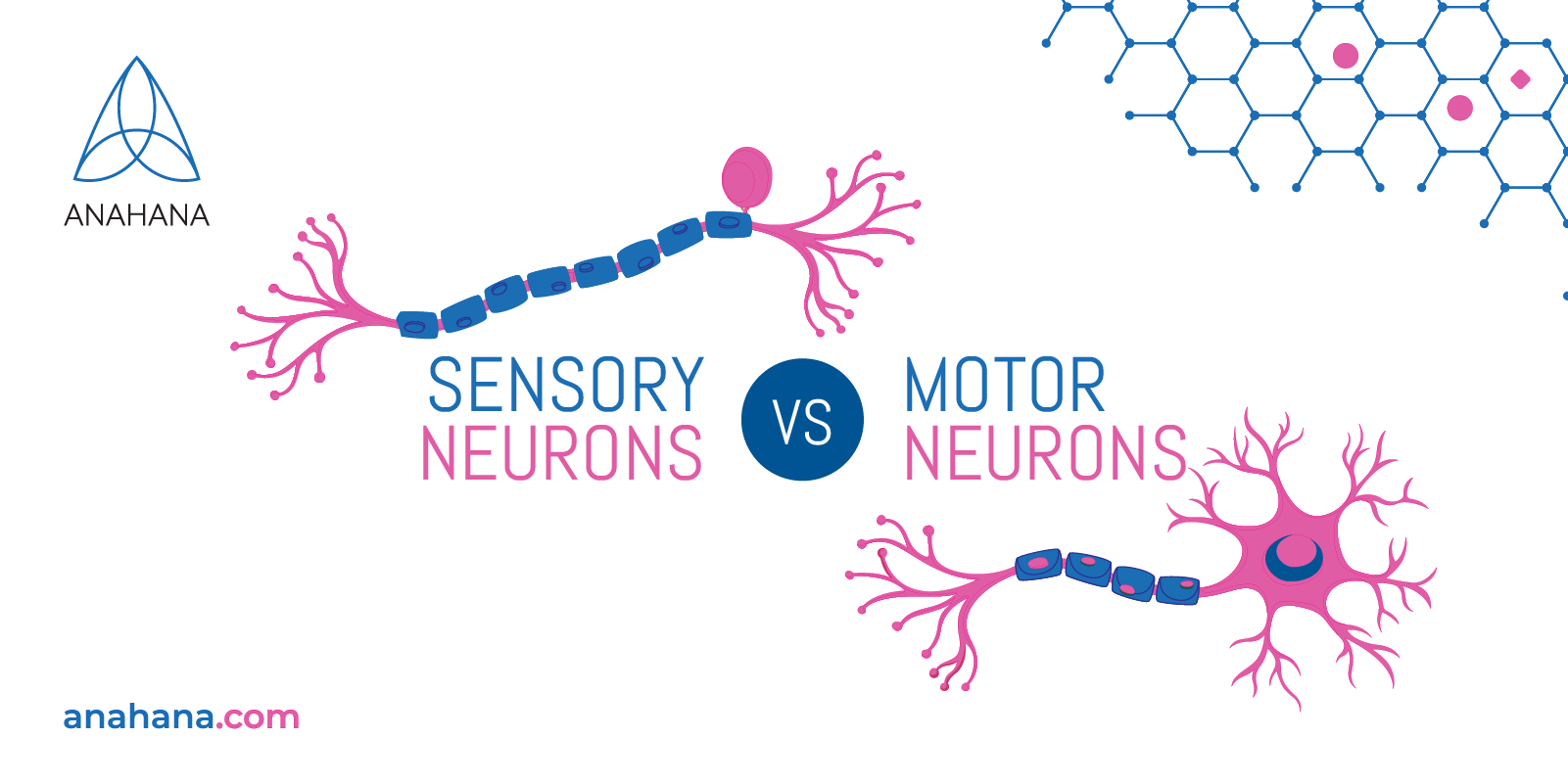
Table of Contents
The human nervous system divides into the central nervous system (CNS) and the peripheral nervous system (PNS). The CNS comprises the brain and spinal cord. The PNS represents all the nerves that extend throughout the human body and sends motor and sensory information between the CNS and the organs, glands, and tissues.
Key Takeaways
- Definition: The peripheral nervous system (PNS) consists of all nerves outside the brain and spinal cord, connecting the CNS to the body.
- Divisions: It includes the somatic nervous system (voluntary movements and sensory information) and the autonomic nervous system (involuntary functions like heart rate and digestion).
- Components: The PNS contains sensory neurons (afferent) and motor neurons (efferent).
- Functions: The PNS transmits sensory input to the CNS and carries motor responses to muscles and glands.
- Damage: Peripheral neuropathy can cause pain, numbness, and weakness, affecting various body functions.
What is the Peripheral Nervous System?
There are two peripheral nervous systems: the somatic nervous system (SNS) and the autonomic nervous system (ANS). The SNS is responsible for voluntary movements and sensory information from the environment. It also controls involuntary motor reflexes.
The ANS regulates involuntary functions, such as heart rate, blood pressure, and digestion. It has three divisions of its own. The sympathetic nervous system regulates the fight-or-flight response, and the parasympathetic nervous system is responsible for rest-and-digest processes. The enteric nervous system controls digestion independently of the other two ANS divisions.
The PNS includes almost all the nerves in the human body. As you can imagine, it is vital to our overall health and function. Damage to peripheral nerves has consequences for all bodily systems.
Peripheral Nervous System Anatomy
 The peripheral nervous system comprises many different nerve cells, or neurons. Each neuron has a cell body, or soma, which contains the cell's nucleus and organelles. Nerve cells receive information from other neurons via short, branching fibers called dendrites. A long projection called an axon transmits nerve signals from the cell body to other nerve cells and target tissues.
The peripheral nervous system comprises many different nerve cells, or neurons. Each neuron has a cell body, or soma, which contains the cell's nucleus and organelles. Nerve cells receive information from other neurons via short, branching fibers called dendrites. A long projection called an axon transmits nerve signals from the cell body to other nerve cells and target tissues.
A myelin sheath surrounds each axon, which helps insulate the axons and speed up nerve impulses. These long nerve fibers carry chemical and electrical impulses between the central nervous system and the rest of the body. Bundles of many nerve fibers together form nerves.
Nerves in the peripheral nervous system can be classified according to their function, structure, or location. Sensory nerves are responsible for sending information from the body to the central nervous system, while motor nerves send signals from the central nervous system to the muscles. Mixed nerves contain both sensory and motor fibers. Interneurons are a minor nerve type that links other nerves and are involved in reflexes.
Cranial Nerves and Spinal Nerves
 Peripheral nerves are all those in the body that extend from the central nervous system - the brain and spinal cord. Those that branch directly from the brain and spinal cord are called cranial and spinal nerves, respectively.
Peripheral nerves are all those in the body that extend from the central nervous system - the brain and spinal cord. Those that branch directly from the brain and spinal cord are called cranial and spinal nerves, respectively.
There are 12 pairs of cranial nerves, referred to by roman numerals I-XII. Cranial nerves transmit sensory input, such as hearing and touch, from structures in the head. They also carry motor signals from the brain to muscles in the head and neck for some voluntary movement.
Ten true cranial nerves (III-XII), which extend from the brainstem and are considered part of the peripheral nervous system. Cranial nerves I and II originate in the cerebral cortex and are usually considered part of the central nervous system. Cranial nerve I controls smell and cranial nerve II controls sight.
Spinal nerves originate in the spinal cord and are always included in the peripheral nervous system. They carry sensory and motor information into and out of the spinal cord. There are 31 pairs of spinal nerves, and their names correspond with the vertebral sections they extend from. For example, cervical spinal nerves originate from the cervical spinal cord.
Spinal nerves form nerve plexuses, or webs, as they come out of the spinal cord before separating into individual nerves. These nerve plexuses help reduce the impact of nerve damage by creating redundant pathways for signals through the spinal nerves.
Sensory Neurons and Motor Neurons
 Sensory Nerves
Sensory Nerves
Sensory neurons, or afferent neurons, carry sensory information from the body to the central nervous system. There are three types of sensory receptors: exteroceptors, interoceptors, and proprioceptors.
Exteroceptors are sensory neurons in the skin and mucous membranes. They are responsible for detecting stimuli from the external environment, such as temperature, touch, pressure, and pain.
Interoceptors are sensory neurons in the internal organs. They are responsible for detecting stimuli from the internal environment, such as pressure changes and pH. Interoceptors act within the autonomic nervous system.
Proprioceptors are sensory neurons in the muscles and joints. They are responsible for detecting information about body position and movement. Proprioceptors act within the somatic nervous system.
Motor Nerves
Motor neurons, or efferent neurons, carry response signals from the central nervous system to the periphery. Motor neurons can be excitatory or inhibitory, meaning they can cause or prevent muscle activity. Both the somatic and autonomic nervous systems contain motor neurons.
Somatic motor nerves are responsible for controlling skeletal muscle, which we can consciously control to move our body. Each motor neuron innervates many muscle fibers, and stimulation of the neuron causes the muscle to contract.
On the other hand, autonomic motor nerves control cardiac muscle in the heart and smooth muscle in the digestive tract, glands, and other internal organs. We cannot consciously control cardiac and smooth muscle.
Nerve Fiber Conduction Speed
There are several classification systems for subtypes of peripheral nerve fibers depending on whether they have sensory or motor functions. There can be overlap between the different schemes due to mixed nerves, so the simplest way to group peripheral nerve fibers overall is by conduction speed.
The fast subtypes are large in diameter and myelinated. They include proprioceptors which tell us about our body positioning within the environment and the amount of stretch in our joints and skeletal muscles. They also include somatic alpha motor fibers, which tell our skeletal muscle fibers to contract.
The moderate subtypes can be medium or small but are always myelinated. Medium fibers are faster than small. These subtypes include mechanoreceptors (touch and pressure), thermoreceptors (cold), and nociceptors (fast pain via free nerve endings). They also include supporting somatic motor fibers and some autonomic efferent fibers.
The slow subtypes are small and unmyelinated. They include nociceptors (slow pain via deep nerve endings), chemoreceptors (smell), thermoreceptors (heat), and some autonomic efferent fibers.
In general, somatic sensory and motor neurons conduct faster than autonomic ones. This is how we can produce quick conscious reactions to our environment.
Frequently Asked Questions
What are the peripheral nervous system and its functions?
The peripheral nervous system refers to a network of nerves that connects the brain and spinal cord to the rest of the body. It includes the cranial nerves, spinal nerves, and all other nerves branching throughout the body.
The peripheral nervous system is responsible for taking input from sensory receptors all over the body and sending it to the central nervous system, then carrying the motor response back out to the periphery.
There are two main divisions of the peripheral nervous system: the somatic nervous system, which is responsible for the voluntary control of muscle movement, and the autonomic nervous system, which is responsible for involuntary vital functions.
What are some disorders of the peripheral nervous system?
The peripheral nervous system innervates organs, muscles, and glands all over the body. As a result, peripheral nerve damage can have many consequences.
Peripheral neuropathy is the general term for nerve damage in the peripheral nervous system. It can cause pain, numbness, tingling, and weakness and disrupt many bodily processes. Both somatic and autonomic nerves may be affected.
Somatic nervous system disorders are typically those related to motor control. One of the most common is amyotrophic lateral sclerosis (ALS, a.k.a Lou Gehrig’s disease). Other examples are multiple sclerosis (MS), herniated discs, and pinched nerves.
Autonomic nervous system disorders often disrupt normal bodily processes resulting in digestive, metabolic, psychiatric, autoimmune and inflammatory conditions. Examples are type 2 diabetes, rheumatoid arthritis, and Parkinson’s disease.
Treatment typically focuses on symptom management and may include physical therapy, medication, and surgery.
What can damage the peripheral nervous system?
Some types of peripheral neuropathy are inherited or have biological risk factors such as genetics and sex. Others have environmental and lifestyle risk factors, including chronic stress, unhealthy diet, lack of exercise, viruses, and toxins.
-
Alcohol: Chronic alcohol abuse can lead to peripheral neuropathy characterized by severe pain and burning sensations, particularly in the legs. Over time, this can lead to a lower threshold for pain and even difficulty walking. Ethanol is neurotoxic, so it can reduce the density of nerve fibers and cause defects in axon structure and function.
-
Stress: Emerging studies suggest that chronic and acute stress events such as financial strain, domestic violence, and childhood abuse can result in nerve damage and alteration of the stress response. This damage can lead to fibromyalgia, a chronic pain condition common in women that doctors previously believed to be a psychiatric disorder.
-
Western-Style Diet: The Western diet is characterized by a high intake of processed meats and fats and a low intake of fruits and vegetables. It is associated with many health problems, including nervous system damage.
One factor is the high content of omega-6 polyunsaturated fatty acids (PUFAs) found in foods such as soybean oil. These fatty acids are essential to our cell membranes, but the Western diet contains 10-20 times more than biologically necessary. A mouse model study found that a diet high in omega-6 PUFAs led to peripheral nerve damage, peripheral neuropathy, and hypersensitivity to pain.
A high-fat diet can also lead to obesity and type 2 diabetes, which are associated with autonomic neuropathy and digestive problems. A study found that feeding mice a high-fat diet for 20 weeks led to significant reductions in the size and overall health of neurons in the gut.
How can I protect my peripheral nervous system?
You can do a few things to protect your peripheral nervous system: avoid smoking and alcohol, eat a healthy diet, exercise regularly, and get prompt treatment for any injuries or illnesses.
-
Exercise: Regular moderate-intensity exercise has many neuroprotective effects, including reducing oxidative stress and improving mood. It can also reduce the impact of nerve damage on your overall health.
For example, damage to motor nerves can result in skeletal muscle degeneration. A study had rats run at a moderate pace for 60 minutes, five days per week for four weeks, and found that this reduced the impact of future nerve injury on skeletal muscle health.
-
B Vitamins: Studies in both human and animal models have found that increasing intake of vitamins B1, B6, and B12 have neuroprotective effects and can even repair damage caused by nerve injury and alcoholic neuropathy.
Vitamin B1, also called thiamine, has the largest role in neural health. Thiamine-rich foods include legumes (e.g., beans, lentils, peas), whole grains, pork, fish, and enriched cereals and bread. It also comes as a supplement. Combining vitamin B1 supplementation with vitamins B6, B12, and E appears to be the most effective.
References
https://www.ncbi.nlm.nih.gov/books/NBK539845/
https://www.ncbi.nlm.nih.gov/books/NBK556027/
https://www.ncbi.nlm.nih.gov/books/NBK539846/
https://www.ncbi.nlm.nih.gov/books/NBK441977/
https://www.ncbi.nlm.nih.gov/books/NBK554616/
Disclaimer
The contents of this article are provided for informational purposes only and are not intended to substitute for professional medical advice, diagnosis, or treatment. It is always recommended to consult with a qualified healthcare provider before making any health-related changes or if you have any questions or concerns about your health. Anahana is not liable for any errors, omissions, or consequences that may occur from using the information provided.

By: Emma Lee
Emma is an editor for Anahana and a soon-to-be graduate of the Master of Science program at the University of Toronto. She graduated with a Bachelor’s in Neuroscience and Immunology at the University of Toronto and has extensive experience in research. She is passionate about learning the science behind health and wellness and hopes to contribute her knowledge to help people live healthier lives. Outside of Anahana, Emma enjoys exploring nature, playing with her dog, and doing arts and crafts.
